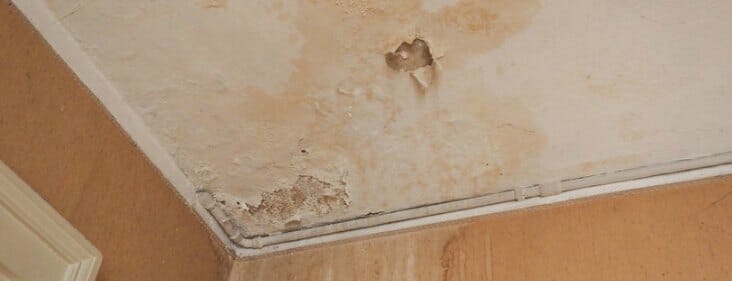Find Out the Six Most Common Causes of Water Leaks and How to Fix Them
Find Out the Six Most Common Causes of Water Leaks and How to Fix Them
Blog Article
What're your thoughts on How to Find Water Leaks?

Leaks not just cause waste of water yet can additionally trigger unneeded damages to your house as well as promote undesirable organic development. By recognizing and looking for daily situations that cause leakages, you can secure your house from future leaks and unnecessary damages.
Instant temperature level modifications.
Extreme temperature level changes in our pipelines can trigger them to expand as well as get suddenly. This development and tightening may create cracks in the pipelines, specifically if the temperature are listed below freezing.
Corroded water supply
This could be the cause of discoloration or warping on your water pipelines. If our plumbing system is old, take into consideration replacing the pipes considering that they are at a higher danger of rust than the more recent versions.
Defective Pipe Joints
The point at which your pipelines connect is often the weakest web link in the waterline. Pipeline joints can deteriorate gradually, causing water leakages. The majority of pipe joints are not quickly visible. If you have noisy pipelines that make ticking or banging sounds, specifically when the hot water is turned on, your pipeline joints are possibly under a great deal of pressure. It is suggested to have your plumber evaluate your system yearly.
Trespassing roots
A lot of water leaks start outside the house instead of inside it. If you observe a sudden reduction in water stress, state in your faucet, require time to head out and analyze your backyard. You might see damp patches or sinkholes in your backyard, which may indicate that tree roots are invading water lines creating water to leak out. You can have your plumber look for breach, especially if you have trees or hedges near your residential or commercial property.
Poor Water Connectors
At times, a leak can be created by loosened tubes as well as pipes that provide your devices. In case of a water connections leakage, you may notice water running directly from the supply line or pools around your appliances.
Obstructed Drains
Clogged drains pipes could be frustrating as well as inconveniencing, however they can occasionally end up creating an overflow resulting in break pipes. Maintain eliminating any products that may decrease your drains that might obstruct them to avoid such aggravations.
All the above are reasons for leakages however not all water leaks arise from plumbing leaks; some leaks may come from roofing leaks. All leakages ought to be fixed quickly to avoid water damages.
Leakages not just cause waste of water but can additionally cause unneeded damages to your home as well as advertise undesirable organic development. By recognizing and looking for daily circumstances that create leaks, you can shield your home from future leakages and also unneeded damage. Today, we will look at six leakage triggers that might be causing your pipes to drip.
At times, a leak can be caused by loose hose pipes as well as pipes that supply your home appliances. In situation of a water links leak, you may notice water running directly from the supply line or puddles around your appliances.
How To Check For Water Leak In Your Home
How To Check for Leaks
The average household's leaks can account for nearly 10,000 gallons of water wasted every year and ten percent of homes have leaks that waste 90 gallons or more per day. Common types of leaks found in the home are worn toilet flappers, dripping faucets, and other leaking valves. These types of leaks are often easy to fix, requiring only a few tools and hardware that can pay for themselves in water savings. Fixing easily corrected household water leaks can save homeowners about 10 percent on their water bills.
To check for leaks in your home, you first need to determine whether you're wasting water and then identify the source of the leak. Here are some tips for finding leaks:
Take a look at your water usage during a colder month, such as January or February. If a family of four exceeds 12,000 gallons per month, there are serious leaks.
Check your water meter before and after a two-hour period when no water is being used. If the meter changes at all, you probably have a leak.
Identify toilet leaks by placing a drop of food coloring in the toilet tank. If any color shows up in the bowl after 10 minutes, you have a leak. (Be sure to flush immediately after the experiment to avoid staining the tank.)
Examine faucet gaskets and pipe fittings for any water on the outside of the pipe to check for surface leaks.
Undetected water leaks can happen without the home or business owner even realizing. If you suspect a water leak, but not able to find the source. It is time to contact a professional water leak detection service, The Leak Doctor.
How To Find a Water Leak In Your Home
https://www.leakdoctor.com/blog/How-To-Check-For-Water-Leak-In-Your-Home_AE197.html

As a fervent reader about Common Water Leaks In House, I was thinking sharing that short article was a good thing. Sharing is caring. Helping people is fun. We love reading our article about How Fast Water Damage Can Ruin Your Home.
Estimating Report this page